Top 10 Least Fuel-Efficient Vehicles in 2025
Alongside electric powertrains, many automakers are still working to optimize the performance and efficiency of their combustion engines. On the other hand, some keep launching outrageous gas guzzlers that are every environmentalist’s nightmare.
After compiling a list of the most fuel-efficient cars and most fuel-efficient SUVs on the market, we’ll now turn our attention to the top 10 vehicles with the worst fuel economy in 2025. Assuming you’d drive them 20,000 km a year, they’d cost you anywhere between $6,400-$7,880 at the pump with a premium gas price of $2 per litre.
- Also: Ford F-150 Raptor R Gets Extra Power, Now Trumps Ram 1500 TRX
- Also: 2023 Cadillac Escalade-V Arrives With 682 Horsepower, Awesome V-Mode
Note: We've excluded track-oriented sports cars and other ultra-luxury models, such as the Ford Mustang GTD, Ferrari Purosangue, Lamborghini Revuelto and Rolls-Royce models. The fuel consumption ratings come from Natural Resources Canada.
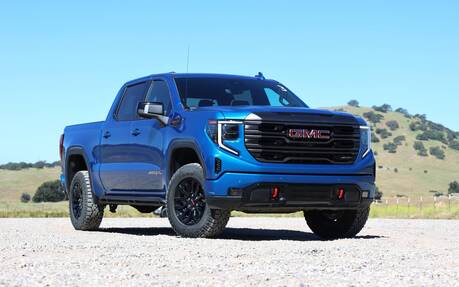
Engine: Naturally aspirated 6.2-litre V8 (420 hp, 460 lb-ft of torque)
Combined fuel consumption: 16 L/100 km
The GMC Sierra 1500 AT4X isn’t trying to compete with the Ford F-150 Raptor R or the Ram 1500 RHO (the successor to the V8-powered TRX) in the high-power supertruck segment. Still, it excels far away from the beaten path—as long as the fuel tank is full, that is. For a more efficient alternative, consider the optional six-cylinder diesel engine.
9. Mercedes-Benz Maybach S 680

Engine: Twin-turbo 6.0-litre V12 (621 hp, 664 lb-ft of torque)
Combined fuel consumption: 16.1 L/100 km
Just like diesels, V12 engines have largely disappeared from the auto industry. This year, Bentley is abandoning its signature W12, while Ferrari is busy developing an electrified powertrain. Conversely, Mercedes-Benz recently confirmed that the S-Class will retain its smooth and mighty 12-cylinder engine as part of its refresh—in top-line Maybach trim, more specifically.

Engine: Twin-turbo 4.0-litre V8 (577 hp, 627 lb-ft of torque)
Combined fuel consumption: 16.2 L/100 km
For the first time ever, the Mercedes-Benz G-Class is available with an electric powertrain. Want the complete opposite? Look for the AMG G 63, which burns fuel as if the end of the world was coming tomorrow. It’s what you get with a refrigerator-shaped full-size SUV than can basically climb Mount Everest and back. The G-Class weighs almost as much as a Cadillac Escalade, yet is shorter in length than a Toyota Camry.
7. Mercedes-Benz AMG GT 63 Pro
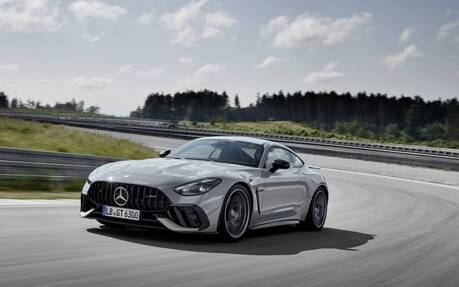
Engine: Twin-turbo 4.0-litre V8 (603 hp, 627 lb-ft of torque)
Combined fuel consumption: 16.5 L/100 km
The third (and final) Mercedes to join this list of gas guzzlers, the AMG GT returned from the dead in 2024 after a three-year absence. It boasts gorgeous looks and four V8-powered models (55, 63, 63 Pro and 63 S E Performance, the latter a plug-in hybrid) that roar like thunder. The base four-cylinder AMG GT 43? Not so much. At least’s a bit more fuel-efficient.
6. Chevrolet Corvette Z06 Carbon Aero Package
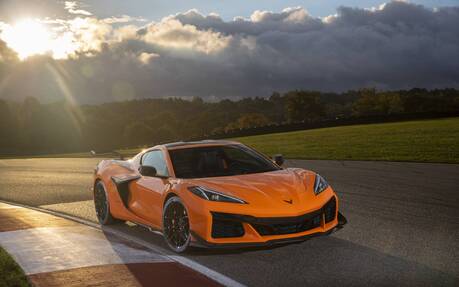
Engine: Naturally aspirated 5.5-litre V8 (670 hp, 460 lb-ft of torque)
Combined fuel consumption: 16.7 L/100 km
The Corvette Z06 comes with a fabulous, naturally aspirated V8 which, like the old Ford Mustang Shelby GT350, features a flat-plane crank. This contributes to the engine's visceral sound and high-revving prowess (redline is at 8,600 rpm). If that doesn’t impress you, surely the 1,064-horsepower, twin-turbocharged Corvette ZR1 will.
5. BMW XM
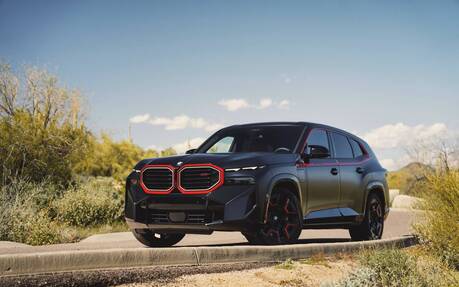
Engine: Twin-turbo 4.4-litre V8 and electric motor (644 hp, 590 lb-ft of torque)
Combined fuel consumption: 17.2 L/100 km
Introduced as part of BMW M’s 50th anniversary, the XM is a controversial tribute to the German automaker’s motorsports division. It’s expected to bow out after just one generation, which BMW purists will agree can’t come soon enough. Granted, this relatively large plug-in hybrid SUV delivers surprisingly good handling and decent zero-emission range, but the polarizing exterior design is what most people only talk about.
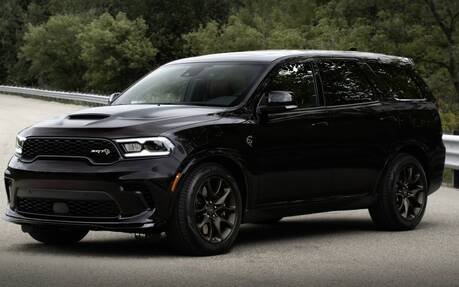
Engine: Supercharged 6.2-litre V8 (710 hp, 645 lb-ft of torque)
Combined fuel consumption: 17.4 L/100 km
The Dodge Durango is currently the last remaining vehicle in the entire Stellantis portfolio to offer a V8 engine. The standard V6 is obviously more fuel-efficient, but the various HEMIs—led by the 710-horsepower, supercharged 6.2-litre Hellcat—is a favourite of Durango customers. Too bad for Mother Nature.
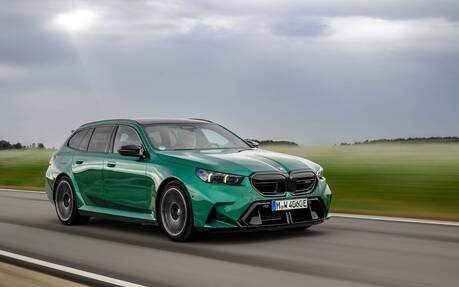
Engine: Twin-turbo 4.4-litre V8 and electric motor (717 hp, 738 lb-ft of torque)
Combined fuel consumption: 17.5 L/100 km
BMW has electrified the M5 in order to be able to continue selling its midsize sports sedan (and wagon) in Europe, where multiple cities have a downtown ban on gas-only cars. That being said, once the high-voltage battery runs empty, the new plug-in hybrid model is less fuel-efficient than its predecessor. By the way, the M5 Touring is available in Canada for the very first time.
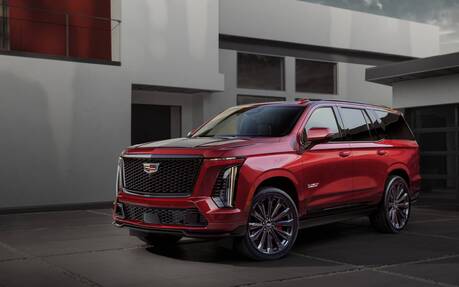
Engine: Supercharged 6.2-litre V8 (682 hp, 653 lb-ft of torque)
Combined fuel consumption: 17.7 L/100 km
The Cadillac Escalade-V inherits the supercharged V8 from the sensational CT5-V Blackwing. In theory, this versatile giant is capable of towing 7,000 lbs, running the quarter-mile in under 13 seconds and pampering up to seven occupants. In reality, no one would expect it to do that. One thing’s for sure, though: the Escalade-V spends a lot of time at the pump.
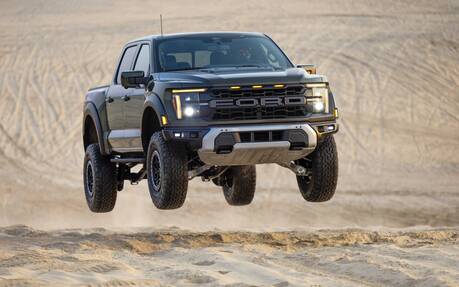
Engine: Supercharged 5.2-litre V8 (720 hp, 640 lb-ft of torque)
Combined fuel consumption: 19.7 L/100 km
How about that? Ford introduced both the first electric pickup in Canada (F-150 Lightning) and the least fuel-efficient (Raptor R), demonstrating the breadth of the F-150 range. The Raptor R was primarily designed to go up against the Ram 1500 TRX, but the latter was eliminated after the 2024 model year. While the battle of dinosaurs is over, the outrageous amount of fossil fuels they require is a stark contrast with modern times.
